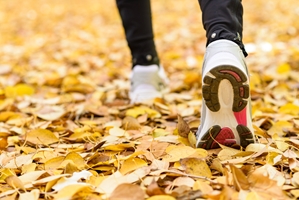
One of the most annoying aspects of spring allergies is the knowledge that getting outside to enjoy the warm weather will exacerbate your symptoms. Regular exercisers feel the effects of this dilemma even more, but it's possible to control your outdoor allergy symptoms enough to enjoy time outside. Consider the following tips from WebMD and U.S. News & World Report to manage your symptoms:
•Be aware of how allergies affect you as an individual. Seasonal allergies are not the same for everyone. A person can be allergic to pollen from trees, grass, molds or weeds, or to a combination of these allergens. Find out what you're allergic to and when it's in season, and check the local pollen counts for that allergen. Pollen.com, airnow.gov, and the National Allergy Bureau's website are good pollen count sources. Figure out how high pollen counts must be before exercising outdoors becomes too uncomfortable for you, and use this as your "threshold number." Keep a log of your allergies to figure out what affects you and when. Speak to an allergist if your symptoms are severe.
•Plan the timing of your outdoor exercise sessions. Pollen counts tend to be higher between 5 and 10 a.m., as well as at dusk, so try to go outside at other times. Dry, windy days are usually the worst for being outside with allergies. Rainy days are preferable, unless you're allergic to mold.
•Prepare before going outside. If you use seasonal allergy medicine, take it prior to exercising. Consider wearing a face mask or bandanna if pollen counts are particularly high. For allergic asthma, use your inhaler about 15 minutes before going outside and bring it with you if possible.
•Take further steps after exercising. Shower, wash your exercise clothes and shampoo your hair. Rinse your nasal cavities with salt water or use a spray if recommended by your doctor.
To learn more about allergy control, visit Allergy Be Gone's store today!









